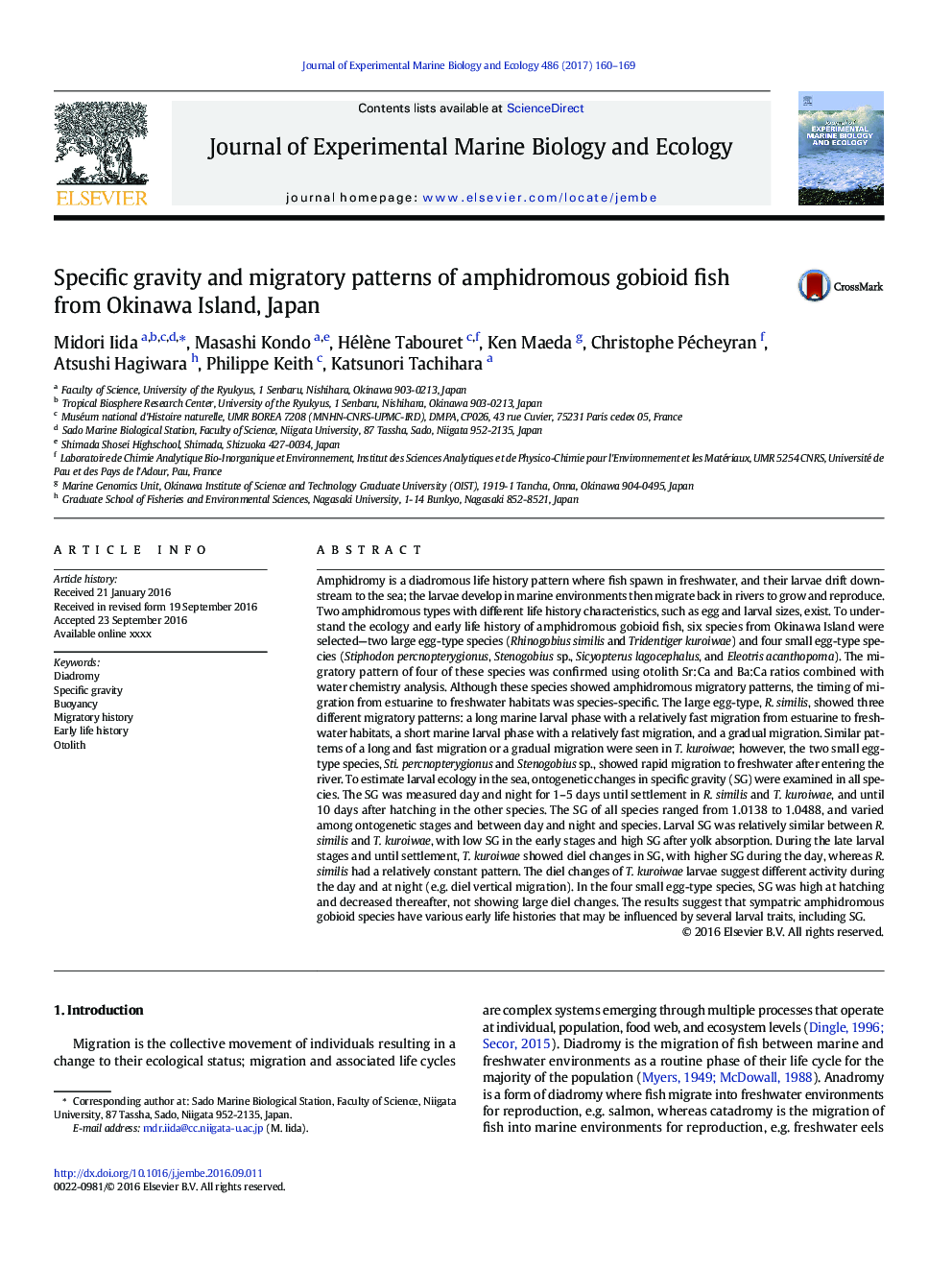| Article ID | Journal | Published Year | Pages | File Type |
|---|---|---|---|---|
| 4395179 | Journal of Experimental Marine Biology and Ecology | 2017 | 10 Pages |
•Amphidromous gobies showed variation in larval specific gravity and migratory pattern.•Larvae of large and small egg type species had different migratory patterns.•A large egg type species showed diel changes in larval specific gravity.•Differences in larval ecology may be related to mechanisms of retention and dispersal.
Amphidromy is a diadromous life history pattern where fish spawn in freshwater, and their larvae drift downstream to the sea; the larvae develop in marine environments then migrate back in rivers to grow and reproduce. Two amphidromous types with different life history characteristics, such as egg and larval sizes, exist. To understand the ecology and early life history of amphidromous gobioid fish, six species from Okinawa Island were selected—two large egg-type species (Rhinogobius similis and Tridentiger kuroiwae) and four small egg-type species (Stiphodon percnopterygionus, Stenogobius sp., Sicyopterus lagocephalus, and Eleotris acanthopoma). The migratory pattern of four of these species was confirmed using otolith Sr:Ca and Ba:Ca ratios combined with water chemistry analysis. Although these species showed amphidromous migratory patterns, the timing of migration from estuarine to freshwater habitats was species-specific. The large egg-type, R. similis, showed three different migratory patterns: a long marine larval phase with a relatively fast migration from estuarine to freshwater habitats, a short marine larval phase with a relatively fast migration, and a gradual migration. Similar patterns of a long and fast migration or a gradual migration were seen in T. kuroiwae; however, the two small egg-type species, Sti. percnopterygionus and Stenogobius sp., showed rapid migration to freshwater after entering the river. To estimate larval ecology in the sea, ontogenetic changes in specific gravity (SG) were examined in all species. The SG was measured day and night for 1–5 days until settlement in R. similis and T. kuroiwae, and until 10 days after hatching in the other species. The SG of all species ranged from 1.0138 to 1.0488, and varied among ontogenetic stages and between day and night and species. Larval SG was relatively similar between R. similis and T. kuroiwae, with low SG in the early stages and high SG after yolk absorption. During the late larval stages and until settlement, T. kuroiwae showed diel changes in SG, with higher SG during the day, whereas R. similis had a relatively constant pattern. The diel changes of T. kuroiwae larvae suggest different activity during the day and at night (e.g. diel vertical migration). In the four small egg-type species, SG was high at hatching and decreased thereafter, not showing large diel changes. The results suggest that sympatric amphidromous gobioid species have various early life histories that may be influenced by several larval traits, including SG.
